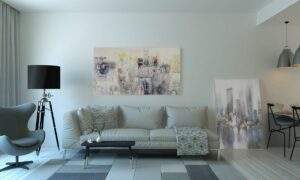The Allure of Contemporary Style Homes: A Design Lover’s Guide
Contemporary homes showcase the current trends in home design. A fierce commitment to modern simplicity, attention to bold scales and geometric shapes, and a strict color palette define this style. The home furnishings used in the contemporary style can be dramatic conversation starters if they have a sculptural element or two. Decorative accessories like expressive artwork and two-toned rugs also add character.
Less Is More
If you’re house hunting, you’ll soon discover many architectural styles. While some may not work for you, others will be a match. A contemporary style home in Frisco TX, features design elements that keep up with current trends while offering a more refined look. As a result, this style is best for homeowners who enjoy sleek designs that evoke an upscale feel. Contemporary houses also provide a range of natural materials to complement their clean lines. For example, polished wood and sleek metals commingle with organic elements like plaster, travertine, and concrete. Vaulted ceilings and wide open spaces are another hallmark of this popular style. Large glass walls are often incorporated to highlight views and allow sunlight.
Natural Elements
Contemporary homes also tend to incorporate natural elements to emphasize a connection to the outdoors. It’s true when it comes to lighting, as these houses often feature large windows and a focus on natural sunlight. Many also feature vaulted ceilings to maximize space. As a result, many contemporary homes also use eco-friendly materials and state-of-the-art appliances, such as stainless steel. They are usually designed with a neutral or black-and-white color palette, with pops of brighter colors used as accents. This house style is best suited for those who prefer to stay abreast of current trends in decor and ornament, as well as homeowners who like to hone a single design theme. As a rule, it is more challenging to mix and match home styles in a contemporary design than in a traditional home. Fortunately, modern houses can be adapted to accommodate changing families by using movable partitions, general-purpose rooms, and non-load-bearing walls that can easily be relocated as the needs of the family change.
Geometric Shapes
If minimalism is your thing, then geometric lines and shapes are already prominent features in your home. Unlike natural designs that draw on curves, points,, and other organic elements, geometric lines focus on artificial shapes like circles, triangles, and squares. Geometric shapes may sound dull or uninspired, but they are versatile and can create various looks. Whether using a pattern with squares, rectangles, or hexagons, geometric shapes add character to a room without feeling overpowering. Circles are closed, elongated shapes that lack straight lines. They make a good choice for coffee tables, footstools, and other central pieces of furniture and look great with circular rugs or mirrors. Triangles are a confident, dynamic shape that can instantly add energy to a room, but they work best when used sparingly, like a feature on the side of a cabinet or wall sconce. They can also be softened with a pastel or neutral color palette.
Exposed Beams
When designing a new property or even a renovation project, exposed beams are one of the more striking structural elements that can be incorporated. It’s true in modern homes with vaulted ceilings that practically beg for the bold lines and peak-defining shape outlined by these rustic features. Whether bare wood or painted to resemble their natural counterparts closely, these decorative elements draw the eye upward, making a space feel more extensive and more expansive than it might otherwise be. This design detail works well in heritage conversion projects, where exposing these timbers can help preserve the character of a building’s original construction method. It’s important to note, however, that it’s always best to consult a structural engineer before adding this design element to a home. These professionals can advise if the structural integrity of a building is likely to be compromised by the addition and ensure that service runs are appropriately arranged and in compliance with regulations, such as fire safety.







